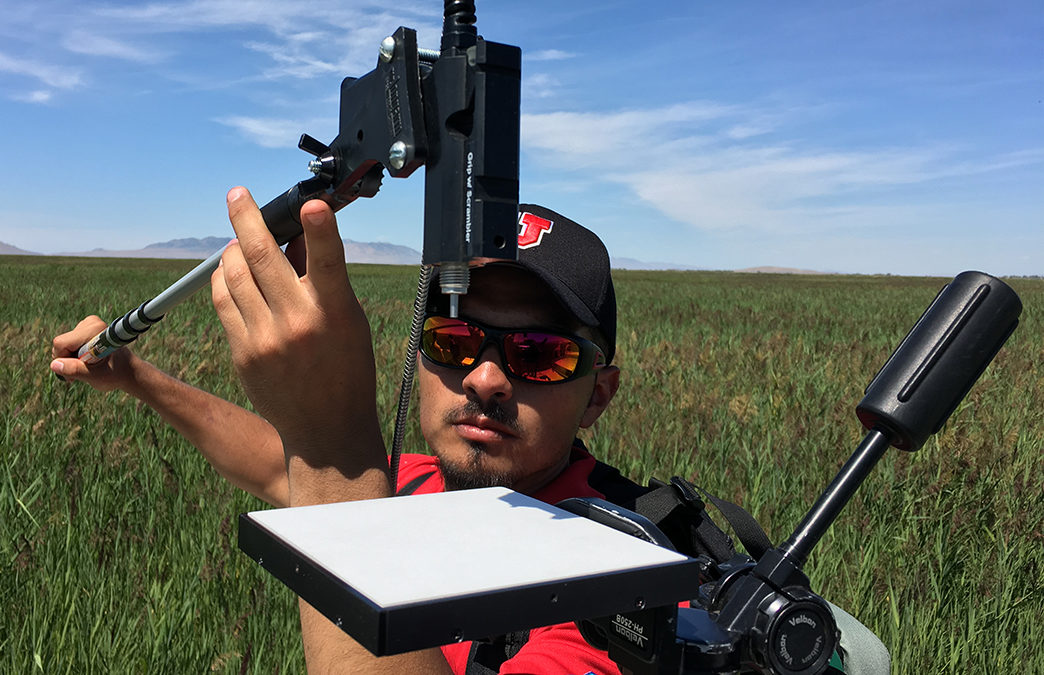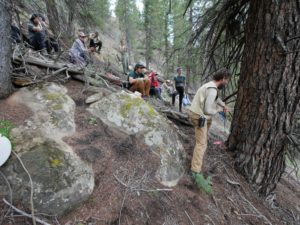University of Utah graduate student Luis Garcia recording reference measurements for invasive phragmites around Great Salt Lake. Photo Credit: Univ of Utah

Editor’s Note: Introducing Our New Column!
We’re excited to announce the debut of this new column dedicated to sustainability on campus!
Each issue, this column will explore innovative eco-friendly initiatives, student projects, and tips for sustainable living on campus.
Join us in celebrating FM’s commitment to a greener future. Stay tuned for insights, news, and resources!
The University of Utah established the School of Environment, Society, & Sustainability, or ESS, this summer, the result of a merger between two successful programs within its College of Social & Behavioral Science (CSBS).
Uniting the Department of Geography and the Environmental & Sustainability Studies program will help meet rapid growth in undergraduate demand for environmental education while fostering research collaborations that address urgent societal issues.
While the school represents a new name and academic structure, undergraduate and graduate degree offerings remain unchanged, according to Phil Dennison, the new school’s director.
The move combines the complementary strengths of two established units into one with 25 tenure-line professors who have training in 11 different fields. Faculty’s expertise includes the physical sciences (e.g. ecology, paleoecology, glaciology, geomorphology, snow hydrology); social and behavioral sciences (e.g. environmental justice, environment sociology, politics ecology, economic geography); and data science (e.g. geographic information science, remote sensing, ecoinformatics).
“Working together and looking at problems from multiple perspectives is going to catalyze big societal impacts,” said Dennison, the former chair of geography.
The school’s applied, integrative and solutions-oriented approach is driven by faculty research. ESS faculty study a wide range of societally important questions: How has the threat from wildfire changed over time, and who is most vulnerable to fires? Why are citizens in lower-income neighborhoods exposed to more pollution, and what steps can be taken to reduce exposure? How are glaciers and winter snowpack changing, and what does that mean for water resources? How are agriculture and climate-related to migration patterns? Through a collaborative, interdisciplinary lens, ESS is advancing research on the most important challenges at the intersection of environment and society.

Dendrochronologist Justin DeRose shows University of Utah students how to take tree-ring cores in Range Creek Canyon in 2019 for a course called Paleoenvironmental Field Methods. Photo credit: Larry Coats, University of Utah
“The School of Environment, Society & Sustainability provides more choices to students as they navigate their academic career paths,” CSBS Dean Michelle Camacho said. “The school also supports our highly ranked research programs. Our faculty engage in cutting-edge research that increasingly requires transdisciplinary approaches to address society’s most pressing environmental challenges.”
ESS courses are taught by former geography faculty members, as well as by professors from the sister CSBS departments of Sociology, Anthropology, Economics and Political Science.
The new school will continue to offer three STEM undergraduate degrees. Environmental and Sustainability Studies is the most popular major in the new school, providing interdisciplinary training on ecological systems, human societies and the consequences of human-environment interactions while giving students maximum flexibility in taking courses from departments across the University of Utah. Bachelor’s and master’s degrees in geographic information science (GIS) focus on career skills development involving geospatial analysis, visualization, and modeling. The bachelor’s, master’s and doctoral programs in geography explore human-environment interactions and global change across space and time.
The two programs that merged to create ESS have a long history at the U. Since its founding in 1947, the U’s geography department rapidly grew to include research in important areas like climate change, hazards, ecology, remote sensing, GIS, landscape dynamics, paleoecology, snow science, and urbanization. The geography department was recently ranked fourth nationally for research and has 56 graduate students.
The program in Environmental and Sustainability Studies, or ENVST, was established in 1998 as a Qualified Interdisciplinary Teaching Program. It was designed “to foster an understanding of ecological systems and the consequences of human-environment interactions,” according to its mission statement.
“The curriculum is rooted in interdisciplinary approaches from earth systems science, humanities and social and behavioral sciences,” the statement reads. “It stresses the importance of social responsibility, leadership and a science-based focus on solutions and integrated problem-solving.”
ENVST had 488 majors in spring 2023 and recently experienced a 70 percent increase in majors over five years. While a sign of success, the growth in student demand brought challenges, such as wait lists for required courses, that a merged school can help solve and provide other benefits.
“The school will train the next generation of interdisciplinary, community-engaged scholars and elevate research around the environment and society,” said anthropology professor Brian Codding, former director of the ENVST program.
Reprinted from the University of Utah website, link via AASHE.


